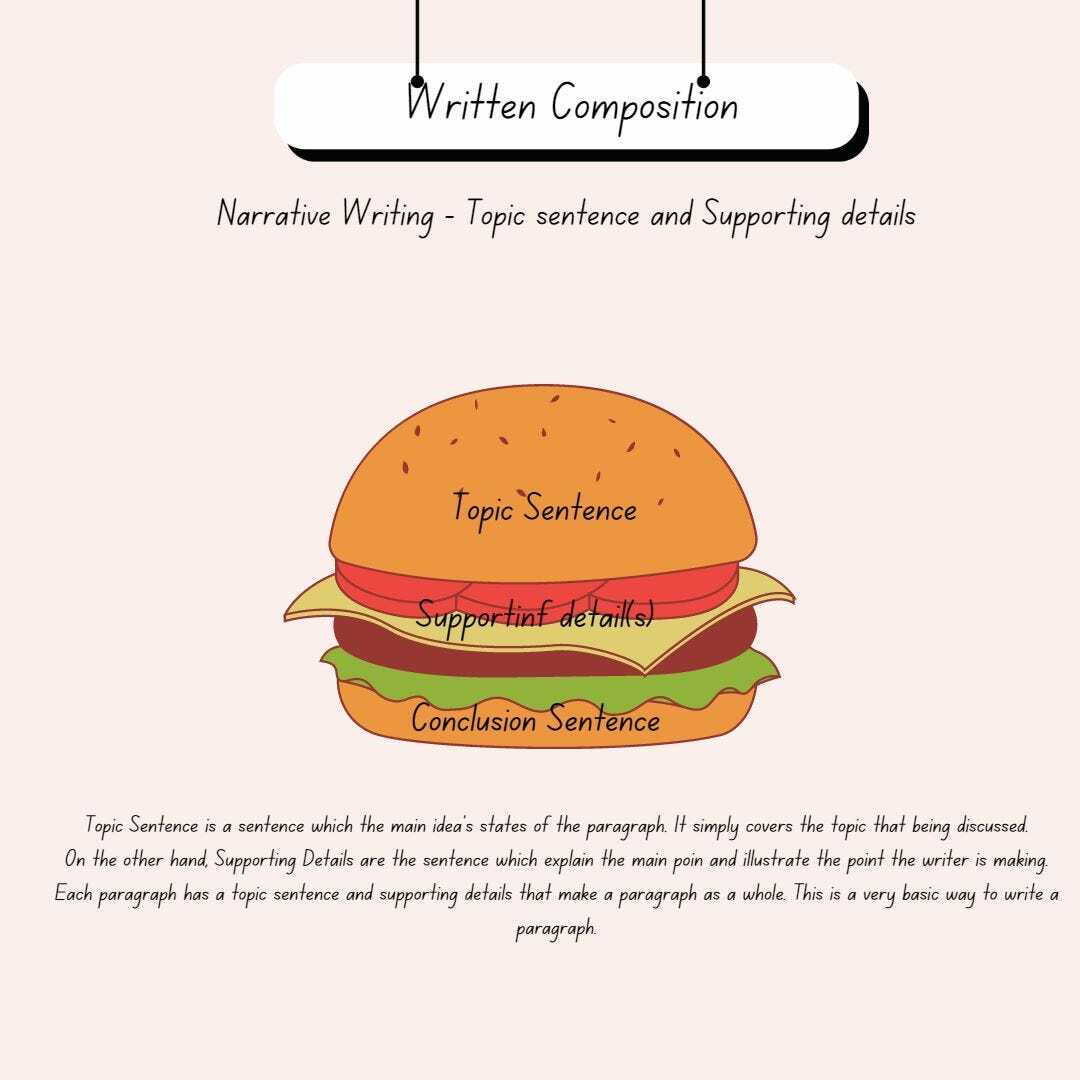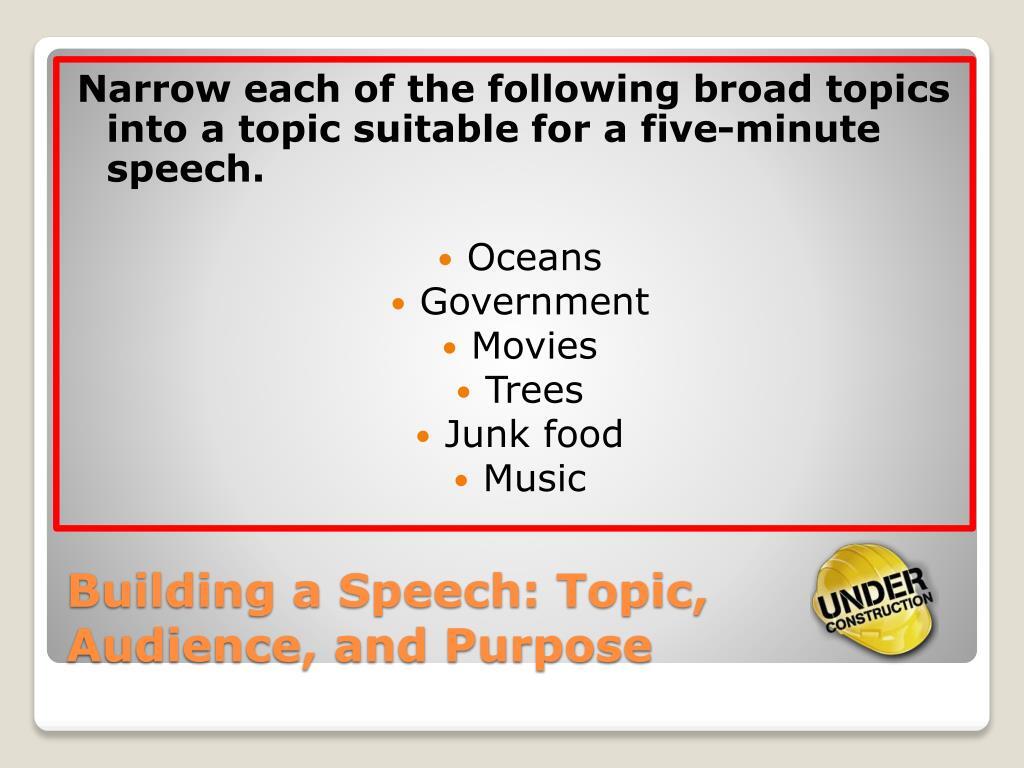Effectively communicating complex information to a broad audience requires careful consideration and strategic planning. This guide provides a structured approach to simplifying intricate concepts, tailoring your message to different backgrounds, and engaging the audience throughout the presentation. Understanding your audience’s knowledge level and common misconceptions is crucial to crafting a clear and impactful explanation.
From breaking down complex ideas into digestible parts to incorporating engaging visual aids and interactive elements, this guide covers every aspect of delivering a successful presentation. It also explores how to handle difficult questions with grace and clarity, ensuring a satisfying and informative experience for both the presenter and the audience.
Understanding the Audience

Effective communication hinges on a clear understanding of the audience. A “general audience” encompasses a broad spectrum of individuals with varying levels of prior knowledge and interests. Accurately identifying the specific characteristics of this audience is paramount to crafting an engaging and comprehensible explanation.A key aspect of successful communication is tailoring the explanation to the audience’s background and pre-existing knowledge.
This involves considering the audience’s familiarity with the topic and identifying potential knowledge gaps or misconceptions. Understanding these factors allows for a more effective and relevant presentation.
Defining General Audiences
A general audience is characterized by a lack of specialized knowledge in a particular field. This lack of specialized knowledge can manifest in various contexts. For instance, a general science audience might have a basic understanding of scientific concepts but may not possess detailed knowledge of specific scientific theories or methodologies. Conversely, a general audience interested in history might have a broad understanding of historical events but lack specific insights into particular historical periods or figures.
The degree of existing knowledge within the general audience significantly impacts the approach to explanation.
Identifying Knowledge Gaps and Misconceptions
Common knowledge gaps or misconceptions within a general audience can vary significantly based on the topic. For instance, a general audience discussing scientific concepts might lack a firm grasp of fundamental principles. In contrast, a general audience discussing historical events might hold inaccurate or incomplete interpretations of certain historical narratives. Therefore, anticipating and addressing potential knowledge gaps is crucial to creating an effective and accurate explanation.
This process often requires researching typical misunderstandings associated with the subject matter.
Tailoring Explanations to Specific Audiences
The explanation should be adapted to suit the specific background and prior knowledge of the general audience. A simplified explanation is necessary for those with minimal background knowledge. Conversely, for audiences with some pre-existing knowledge, a more in-depth explanation may be suitable, yet it should avoid overly technical jargon. The goal is to provide clarity and comprehension without overwhelming the audience with excessive detail.
For instance, when explaining quantum physics to a general audience, focusing on the core concepts of superposition and entanglement without diving into complex mathematical equations would be appropriate.
Examples of General Audiences and Communication Styles
Diverse audiences necessitate diverse communication styles. A general audience interested in astrophysics might benefit from analogies to everyday experiences, such as comparing the vastness of space to the size of a room. A general audience interested in political history might appreciate a chronological narrative, highlighting key events and their interconnectedness. Similarly, a general audience interested in environmental issues might find benefit in a presentation that employs compelling visual aids and real-world examples.
Assessing Audience Comprehension
Evaluating audience comprehension is crucial for effective communication. Non-intrusive methods, such as observing audience engagement, asking thoughtful questions, and monitoring reactions, can offer valuable insights into comprehension levels. For example, incorporating interactive elements, such as polls or short quizzes, can help gauge understanding without making the audience feel assessed. The use of visual aids and real-world examples, tailored to the audience’s background, can enhance comprehension and engagement.
Simplifying Complex Concepts
Effectively communicating complex topics to a general audience requires a strategic approach to simplification. This involves recognizing the limitations of the audience’s existing knowledge and tailoring the explanation to meet those limitations. Understanding the audience’s background and interests is crucial for crafting an engaging and understandable presentation.Simplifying complex ideas involves more than just using simpler words; it necessitates a thoughtful deconstruction of the subject matter.
This process involves identifying the core concepts, isolating them from supporting details, and presenting them in a clear and concise manner. Analogies, real-world examples, and visual aids are invaluable tools for achieving this simplification.
Breaking Down Complex Ideas
To effectively break down intricate ideas, a systematic approach is necessary. Identify the core concepts within the topic and Artikel them. This decomposition allows for a clear and structured presentation, making the subject less overwhelming. Isolate the central arguments and support them with clear examples, avoiding tangential or complex details. This method allows the audience to grasp the fundamental principles without getting bogged down in the complexities.
Avoiding Technical Jargon
Technical jargon can create barriers to understanding for a general audience. Replacing technical terms with simpler, equivalent terms or explanations is essential for clear communication. Consider the audience’s knowledge level and tailor the vocabulary accordingly. This often involves using plain language and avoiding specialized terms unless absolutely necessary. Explaining technical terms using relatable examples enhances comprehension.
Using Analogies and Real-World Examples
Relatable analogies and real-world examples are powerful tools for explaining abstract concepts. Analogies connect unfamiliar ideas to familiar ones, making them more understandable. Real-world examples ground abstract concepts in concrete situations, making them more relatable and memorable. For instance, to explain the concept of quantum entanglement, one could use the example of two coins that are flipped simultaneously and always land on opposite sides.
This analogy helps the audience visualize the concept.
Utilizing Visual Aids
Visual aids, such as diagrams, charts, and images, can greatly enhance understanding of complex information. Diagrams can illustrate complex processes or relationships in a concise and visual manner. Charts can display data and patterns clearly, helping the audience to identify trends and insights. Images can convey meaning effectively, especially when coupled with appropriate captions or explanations. For example, a flow chart can effectively illustrate a multi-step process.
Employing Storytelling Techniques
Storytelling is a powerful tool for engaging an audience and making a topic memorable. Stories create a narrative context that helps the audience connect with the information on a deeper level. Weaving stories into the presentation can make the information more relatable and engaging, leading to better retention. A well-crafted story can transform a dry subject into a captivating narrative.
Engaging the Audience

Maintaining audience engagement is crucial for effective communication of complex topics. A captivated audience is more receptive to the information presented, and more likely to retain and understand the nuances of the subject matter. Strategies for fostering this engagement should be thoughtfully integrated into the presentation to maximize comprehension and impact.
Interactive Elements
Interactive elements, such as questions, polls, and discussions, can significantly enhance audience engagement. They encourage active participation and create a dynamic learning environment. These elements not only reinforce understanding but also demonstrate that the presenter values audience input. By incorporating these elements, the presenter fosters a sense of shared learning.
- Questions: Strategic questions posed at appropriate intervals can guide the audience’s understanding and encourage critical thinking. Well-placed open-ended questions, particularly those prompting reflection, can foster deeper comprehension. For instance, a question about the potential societal impact of a scientific discovery encourages active thinking. This approach can be very effective when the questions are relevant to the topic and the audience’s background.
- Polls: Polls can gauge audience understanding and provide immediate feedback on the presenter’s message. This interactive tool helps assess comprehension in real-time, allowing for adjustments in the presentation if necessary. Using polls on topics like the perceived importance of a new technology can illustrate how public opinion can influence decisions.
- Discussions: Encouraging discussions among audience members fosters a sense of community and shared learning. Facilitating these discussions by posing thought-provoking questions and providing structure for the conversation enhances the presentation’s effectiveness. For example, organizing a panel discussion on different perspectives surrounding a particular topic can enrich the audience’s understanding.
Humor and Relatable Anecdotes
Humor and relatable anecdotes can make complex information more accessible and memorable. Using appropriate humor, and relatable examples, can create a positive learning environment and enhance the presentation’s overall impact. These tools make the presentation more engaging and memorable, fostering a stronger connection between the presenter and the audience.
- Humor: Humor, when appropriately applied, can significantly enhance audience engagement. It can lighten the mood, make the presentation more memorable, and create a more positive learning environment. Choosing humor that is relevant to the topic and the audience is key to avoiding inappropriate or off-putting content. For example, a presenter discussing the challenges of managing global supply chains might use a humorous anecdote about a product delivery gone wrong to illustrate the complexity of the issue.
- Anecdotes: Relatable anecdotes can illustrate complex ideas in a concrete and memorable way. Sharing personal stories or examples from real-life situations can connect the topic to the audience’s experiences and make the information more relatable. For example, when discussing the impact of technological advancements, a presentation could include a personal anecdote about how a specific technology has affected a presenter’s daily life.
Audience Participation and Feedback
Creating opportunities for audience participation and feedback is essential for tailoring the presentation to the audience’s needs and ensuring comprehension. This process not only allows the audience to feel involved but also provides the presenter with valuable insights.
- Open Forum: Allocating time for open discussion allows audience members to voice their thoughts and concerns directly. This can lead to a deeper understanding of the topic and a more interactive learning experience. This is especially valuable for controversial or sensitive topics.
- Q&A Sessions: Setting aside time for questions and answers allows the audience to clarify any doubts or ask for further explanations. This direct interaction ensures the audience gains a better grasp of the information presented.
Creating Curiosity and Intrigue
Creating curiosity and intrigue about the topic from the outset can motivate audience engagement and maintain interest throughout the presentation.
- Mystery and Intrigue: Beginning with a captivating question or a surprising fact about the topic can create a sense of mystery and intrigue, prompting audience members to actively listen and seek answers. This method can be particularly effective in piquing the audience’s interest before introducing the topic.
- Startling Statistics: Presenting startling statistics or data points related to the topic can immediately capture audience attention. This method is especially effective when the statistics highlight the importance or impact of the topic.
Diverse Perspectives and Viewpoints
Incorporating diverse perspectives and viewpoints is crucial for presenting a balanced and comprehensive understanding of complex topics. This approach promotes a more inclusive and enriching learning environment.
- Expert Interviews: Including expert interviews or perspectives from various backgrounds can broaden the presentation’s scope and provide different insights into the topic. This approach allows for a more complete understanding of the topic from multiple viewpoints.
- Case Studies: Using case studies from various cultures or backgrounds can demonstrate the topic’s relevance to diverse communities. For instance, a presentation on economic policies could include case studies from different countries to illustrate the varying impacts of the policies.
Illustrative Examples

Effective communication of complex topics relies heavily on illustrative examples. These examples not only clarify abstract concepts but also make them relatable and memorable for the audience. By using various methods, such as analogies, real-world scenarios, and visual aids, presenters can transform intricate ideas into easily digestible information.
Illustrative Methods for Explaining Complex Concepts
A well-structured approach to explaining complex ideas often involves employing multiple illustrative methods. This allows for a richer understanding and engagement with the subject matter. The following table demonstrates various methods and their application:
| Method | Example | Impact |
|---|---|---|
| Analogies | Explaining the concept of “inflation” by comparing it to a balloon inflating. A small amount of air makes little difference, but as the balloon inflates, the volume expands rapidly, illustrating the exponential nature of inflation. | Creates a mental image, linking the abstract to the familiar. |
| Real-world examples | Illustrating the process of photosynthesis by showcasing how a plant uses sunlight, water, and carbon dioxide to produce food. | Connects the concept to practical application, demonstrating its relevance in everyday life. |
| Visual aids (diagrams) | Using a flowchart to explain the steps in a specific scientific process, such as the water cycle. | Provides a clear, concise representation of complex information, facilitating comprehension. |
| Visual aids (charts) | Displaying a bar graph comparing the growth of different countries’ economies over time, making trends readily apparent. | Highlights key data points and trends, enabling quick comprehension of patterns. |
Addressing Audience Questions and Concerns
Anticipating and addressing potential audience questions and concerns is crucial for effective communication. A prepared approach allows for a smoother and more informative presentation. The following table Artikels strategies for managing common questions:
| Question Category | Strategies |
|---|---|
| Clarification of Terminology | Define unfamiliar terms clearly and provide examples. Use analogies or simplified explanations. |
| Challenge to Assumptions | Acknowledge and address potential misinterpretations or doubts directly. Offer supporting evidence or alternative perspectives. |
| Concerns about Implications | Explain the potential consequences or impacts of the topic in a balanced and neutral way. Provide examples of both positive and negative implications. |
Explaining the History of the Printing Press: Comparative Analysis
Different approaches to explaining the history of the printing press can emphasize different aspects of its significance. The following table compares and contrasts these approaches:
| Approach | Focus | Strengths | Weaknesses |
|---|---|---|---|
| Technological Advancement | Emphasizes the innovative mechanics and engineering behind the printing press. | Highlights the ingenuity of the invention and its impact on efficiency. | May overlook the broader societal and cultural implications. |
| Social Impact | Focuses on the spread of knowledge and ideas, the democratization of information, and the cultural shift brought about by the printing press. | Demonstrates the profound effects on society and culture. | Might lose some detail on the technical aspects. |
| Economic Implications | Examines the role of the printing press in shaping trade, commerce, and the development of the book industry. | Illustrates the significant economic impact of the invention. | May overshadow the social and technological aspects. |
Presenting Data Effectively
Presenting data effectively requires clear visualization and appropriate choice of graphical representation. Graphs and charts should complement the narrative, not overshadow it.
Data visualization should be concise, focused, and avoid clutter. Use appropriate labels, titles, and legends to ensure clarity.
For example, a line graph can effectively illustrate the trend of a specific variable over time. A bar graph is ideal for comparing different categories or groups. A pie chart can highlight the proportion of different elements within a whole.
Handling Difficult Questions

Anticipating and addressing challenging questions effectively is crucial for maintaining audience engagement and trust. A well-prepared speaker can turn potentially disruptive moments into opportunities to clarify points and strengthen understanding. This section provides strategies for navigating difficult questions with confidence and grace.
Anticipating Potential Questions and Concerns
A proactive approach to anticipating potential questions is vital. Consider the audience’s background knowledge, potential biases, and the specific subject matter. Brainstorm a list of likely questions, ranging from simple clarifications to more complex criticisms. Pre-planning allows for a more composed and thoughtful response during the Q&A session. This preparation will enable you to address the concerns proactively and address them with confidence.
Responding to Challenging Questions or Criticisms
Handling challenging questions or criticisms requires a calm and respectful demeanor. Avoid getting defensive or dismissive. Acknowledge the questioner’s perspective, even if you disagree. Paraphrase the question to ensure you understand it correctly before responding. This shows attentiveness and a genuine interest in the audience’s concerns.
A measured response demonstrating a clear understanding of the topic, along with a commitment to clarity, will usually defuse the situation.
Providing Concise and Accurate Answers
When responding to questions, focus on providing concise and accurate answers. Avoid jargon or overly technical language. If necessary, use simple analogies or real-world examples to illustrate complex concepts. Clarity is paramount. A well-structured answer, free of ambiguity, helps the audience understand the core message.
Presenting Alternative Viewpoints
Presenting alternative viewpoints is often a part of robust discussion. This is not about compromising your core message, but about showcasing the nuances of the subject matter. Clearly Artikel the different perspectives and provide a balanced explanation of each. By acknowledging opposing viewpoints, you enhance the credibility of your own perspective. This fosters an environment of intellectual exploration, encouraging a more in-depth understanding of the subject matter.
This is not about weakening your position, but about demonstrating a thorough grasp of the complexities involved.
Example Table of Common Audience Questions and Appropriate Responses
| Common Audience Question | Appropriate Response |
|---|---|
| “Your data seems incomplete. Are you sure this is accurate?” | “Thank you for raising that point. While our current data set is comprehensive, we acknowledge there may be gaps. Our analysis is based on the available information, and we’re actively working to expand our dataset to address this concern. The limitations are noted in our report, and we encourage further research in this area.” |
| “How does this theory apply to real-world scenarios?” | “This theory, while abstract, finds practical application in several areas. For example, consider the recent case study of [mention a relevant case study], where the principles demonstrated a [positive outcome].” |
| “Are there any potential downsides to implementing this solution?” | “While this solution offers numerous benefits, it’s crucial to acknowledge potential drawbacks. One potential challenge is [mention a potential challenge] but we have strategies in place to mitigate this risk, such as [mention a mitigation strategy].” |
Summary

In conclusion, successfully explaining a complex topic to a general audience hinges on understanding the audience, simplifying the content, structuring the explanation logically, engaging the audience, providing illustrative examples, and effectively handling difficult questions. By employing these strategies, presenters can confidently convey intricate information in a way that is both understandable and memorable. This comprehensive guide offers practical techniques to make complex topics accessible and engaging for all.